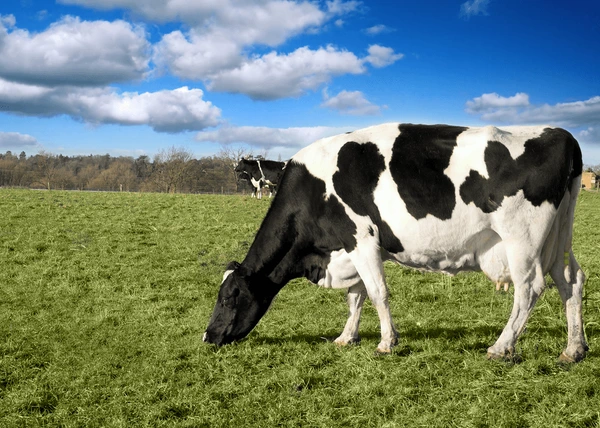In dairy farming, high milk yield is often seen as the hallmark of success. However, what many producers may overlook is the central role the liver plays in achieving this. The liver is a metabolic powerhouse responsible for nutrient processing, hormone metabolism, immune function and detoxification. If this vital organ is compromised, so is the cow’s capacity to produce milk, fight disease and reproduce efficiently.
Liver Function: A Key Driver of Dairy Productivity
The liver in dairy animals is involved in:
- Gluconeogenesis (production of glucose for energy and milk lactose synthesis)
- Fat metabolism (conversion of non-esterified fatty acids into usable energy or ketone bodies)
- Detoxification (removal of endotoxins, mycotoxins and ammonia)
- Protein metabolism (urea synthesis and amino acid regulation)
- Hormonal regulation (metabolism of reproductive and lactation hormones)
During early lactation, the cow enters a state of negative energy balance, mobilizing fat from body reserves. These fats are sent to the liver as non-esterified fatty acids (NEFAs). If the liver is overwhelmed, it leads to fatty liver syndrome and ketosis. Directly reducing milk production and compromising health.
How Poor Liver Health Impairs Milk Production
1. Reduced Glucose Availability
Glucose is vital for lactose synthesis, which determines milk volume. A dysfunctional liver cannot perform gluconeogenesis efficiently, leading to insufficient glucose availability for the mammary gland (Zhao et al., 2006).
2. Fatty Liver and Ketosis
High NEFA influx to the liver increases the risk of hepatic lipidosis (fatty liver), impairing liver function. This leads to subclinical ketosis, where energy is diverted away from milk production and reproductive hormones (Ospina et al., 2010).
3. Immune Suppression
The liver plays a key role in filtering pathogens and synthesizing acute phase proteins. When its detox capacity is compromised, immune response weakens, increasing the risk of mastitis, metritis and retained placenta, all of which further suppress milk yield (Bradford et al., 2015).
4. Reproductive Disorders
Liver dysfunction can impair estrogen and progesterone metabolism, resulting in silent heat, delayed ovulation and poor conception rates (Wathes et al., 2007). These reproductive inefficiencies indirectly reduce lifetime milk production.
The Transition Period: A Critical Liver Stress Window
The three weeks before and after calving are metabolically intense. Studies show that up to 50% of high-yielding cows develop subclinical liver dysfunction during this transition period (Grummer, 1993). Left unaddressed, these cows show lower peak milk yield, longer calving intervals and higher disease incidence.
Mechanisms of Action of Heprich Components
- Choline chloride: Prevents hepatic lipidosis by mobilizing liver fat and facilitating fat metabolism, thereby reducing the risk of fatty liver in dairy animals.
- Silymarin: Stabilizes hepatocyte (liver cell) membranes and acts as a powerful antioxidant that neutralizes free radicals, protecting the liver from oxidative damage.
- Phyllanthus niruri: Enhances liver detoxification by increasing the activity of glutathione-S-transferase and other liver enzymes responsible for toxin breakdown and elimination.
- Azadirachta indica: Supports liver health by reducing oxidative stress, enhancing antioxidant defenses and helping the liver eliminate toxins more effectively.
- Boerhavia diffusa: Functions as a natural diuretic and supports hepatocellular protection, aiding in liver tissue repair and fluid regulation during stress or toxicity.
- Andrographis paniculata: Reduces liver inflammation by inhibiting the NF-κB pathway, thereby lowering the production of pro-inflammatory cytokines and protecting liver structure.
When to Use Heprich in Dairy Animals
- High-yielding lactation phase
- Recovery from ketosis or fatty liver
- As a support during mastitis, antibiotic use or aflatoxicosis
- Periods of feed-related liver stress
Conclusion
Liver health is the silent driver of dairy productivity. Without a functioning liver, the most carefully balanced diet or best genetics cannot express their full potential. Heprich provides a scientifically validated, herbal solution to protect and enhance liver function leading to healthier cows, higher milk yields and better reproductive outcomes.
For any dairy operation focused on long-term profitability and animal welfare, supporting liver health is not optional, it's essential.
References
- Drackley, J. K. (1999). Biology of dairy cows during the transition period: The final frontier? Journal of Dairy Science, 82(11), 2259–2273.
- Zhao, X., et al. (2006). Gluconeogenesis in dairy cows: The importance of liver function. Animal Feed Science and Technology, 126(3–4), 157–167.
- Ospina, P. A., et al. (2010). Evaluation of nonesterified fatty acids and beta-hydroxybutyrate in transition dairy cows. Journal of Dairy Science, 93(6), 2449–2458.
- Bradford, B. J., & Allen, M. S. (2015). Negative energy balance and hepatic function. Veterinary Clinics of North America: Food Animal Practice, 31(2), 231–250.
- Wathes, D. C., et al. (2007). Endocrine signals linking metabolic and reproductive functions in the dairy cow. Reproduction, 134(3), 321–332.
- Grummer, R. R. (1993). Etiology of lipid-related metabolic disorders in periparturient dairy cows. Journal of Dairy Science, 76(12), 3882–3896.
Disclaimer: This blog is intended for educational purposes. Consult a qualified veterinarian for diagnosis and treatment protocols.
